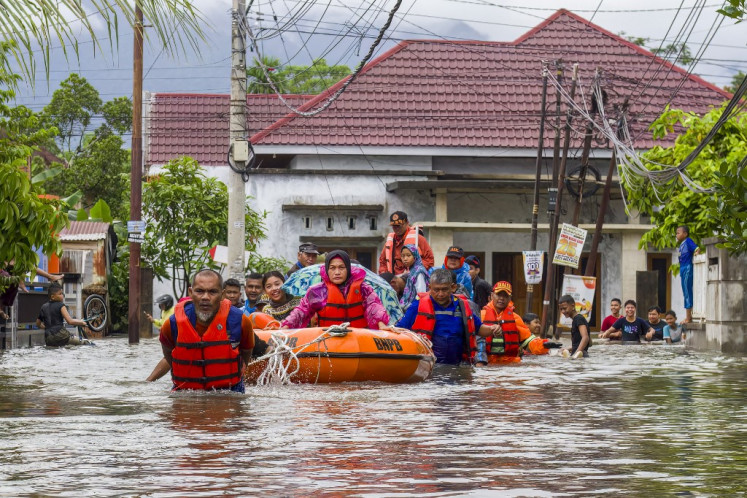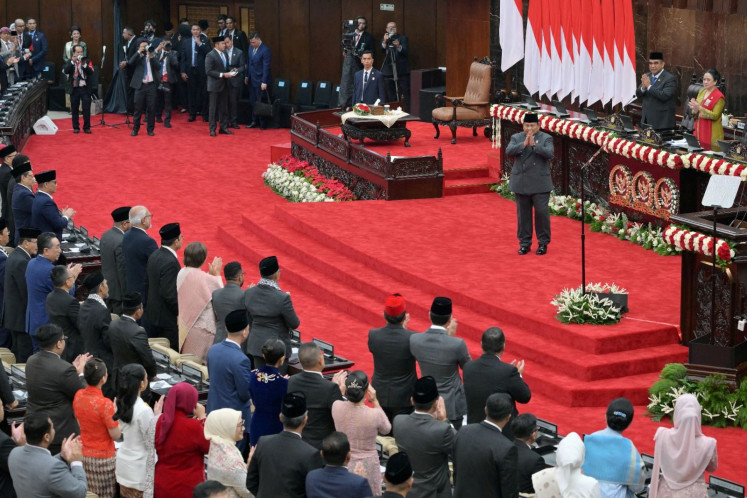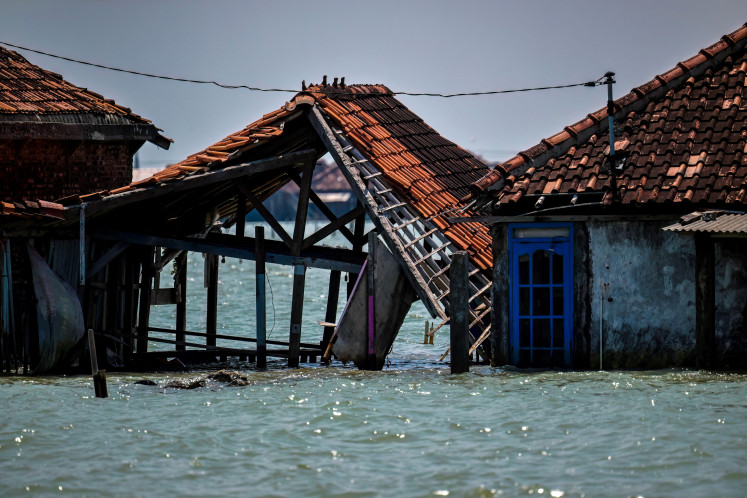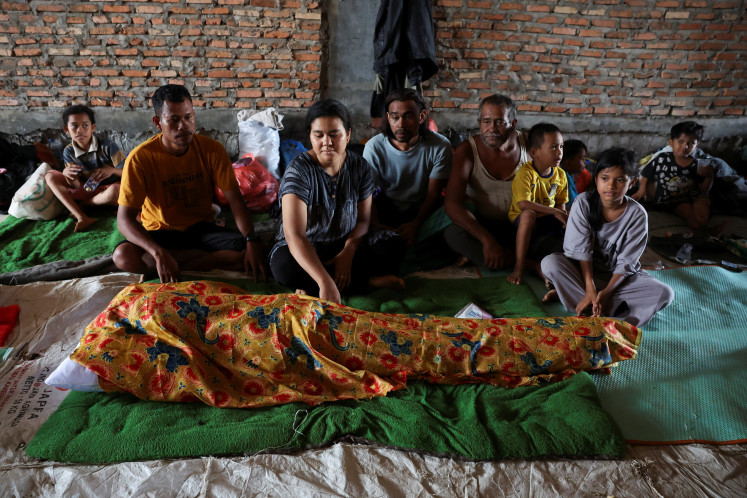Popular Reads
Top Results
Can't find what you're looking for?
View all search resultsPopular Reads
Top Results
Can't find what you're looking for?
View all search resultsMissing strategies against COVID-19
As child victims have fallen, it’s time to thoroughly review the country’s handling of the pandemic.
Change text size
Gift Premium Articles
to Anyone
 Mesa (left), a fifth grader, helps her younger sister Shafa (center) study for school at the customers table of their parent’s food stall in Pinang Ranti, East Jakarta, on Friday April 03,2020, while their 4-year-old brother Eland looks on. The spread of COVID-19 virus has forced millions Indonesians, including schoolchildren, to work and study from home. (JP/P.J.Leo)
Mesa (left), a fifth grader, helps her younger sister Shafa (center) study for school at the customers table of their parent’s food stall in Pinang Ranti, East Jakarta, on Friday April 03,2020, while their 4-year-old brother Eland looks on. The spread of COVID-19 virus has forced millions Indonesians, including schoolchildren, to work and study from home. (JP/P.J.Leo)
T
he COVID-19 pandemic in Indonesia is escalating day by day and spreading indiscriminately, reaching almost the entire country. Even among confirmed patients, a lot is still unknown regarding precisely where and how they were infected. As of April 3, confirmed cases in Indonesia had reached almost 2,000 and 181 people had died, including medical professionals and other health workers.
Thousands have returned to their hometowns and villages, many having lost their income and workplaces have been temporarily closed. The mass homecoming exodus (mudik) from the capital has intensified virus transmissions to more regions in the country, as Jakarta is the epicenter. These travelers have strong potential to be COVID-19 carriers and they could endanger their families and local communities, especially the elderly and children. Millions of more travelers are expected ahead of post-Ramadan celebrations, which fall in May this year.
The absence of clear and decisive policies from the government has largely contributed to the massive numbers of coronavirus cases, mainly in diverse areas in Java, which makes the pandemic even harder to control. Nationwide policies were only announced last week. A few minors have already died of COVID-19 even though the infection rate among children worldwide has been relatively low. In Indonesia,
one fatality was an 11-yearold patient who died on March 20 in her hometown in Madura, East Java. She reportedly also had dengue fever but tested positive for the coronavirus only after her death. On March 31, a 14-year-old patient in Kubu Raya, West Kalimantan, also died with COVID-19 as the suspected cause.
Almost all recommendations from the World Health Organization and the government regarding the pandemic have not yet covered detailed explanations related to children. Treatment for children differs greatly than that for adults. Human rights issues related to health for children is also distinct. Many parties have pushed the government to be more transparent in delivering COVID-19 data including regarding patients’ ages.
This data is required to investigate the source of virus transmission among children and to prevent the more expansive spread among minors.
For children, the same standard must be applied in differentiating individuals being monitored (ODP) from patients under treatment (PDP) to identify children suspected of having COVID-19. Children in weak condition are likely to have had prior health issues, as was the case with the aforementioned girl from Madura.
Exclusive referral hospitals, or at least exclusive isolation wards, are needed for children. Involving the Indonesian Pediatric Society (IDAI) is vital in the treatment of minors in COVID-19 cases. Moreover, all referral hospitals should have pediatric pulmonologists.
This is particularly true for children under 5, as they would be isolated with their parents, who could also become infected along with the whole household when they are isolated at home given the high risk of contagion from COVID-19.
As we now have confirmation of infected children, all aspects need to be questioned. Are there referral hospitals exclusively for COVID-19 pediatric patients? Are there isolation wards for minors with COVID-19? Are pediatric pulmonologists available at the existing referral hospitals?
The deaths of the children, even though seemingly very few so far, are not mere numbers in the nation’s death toll. They are our wake-up call. The government must be transparent by opening the data on the age of CO VID-19 patients under treatment in Indonesia. As child victims have fallen, it’s time to thoroughly review the country’s handling of the pandemic.
***
Member of the Indonesian Child Protection Commission (KPAI)










